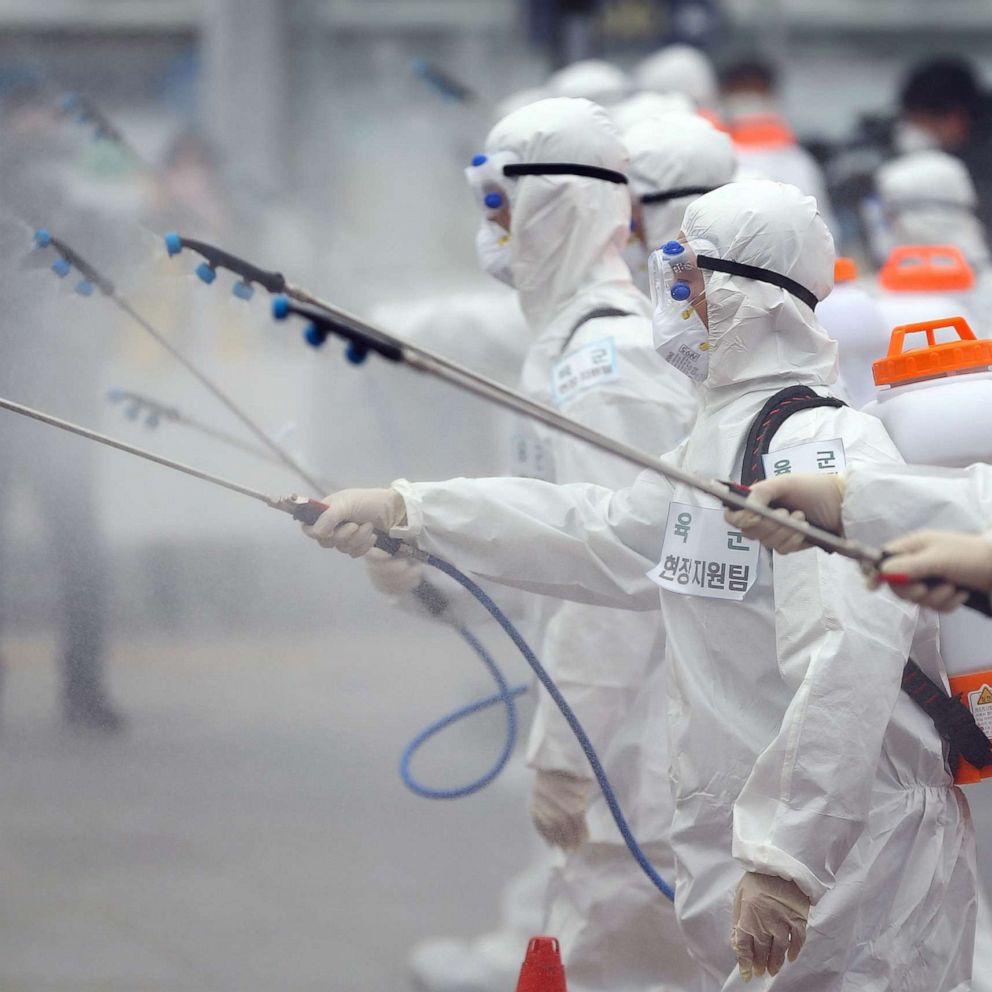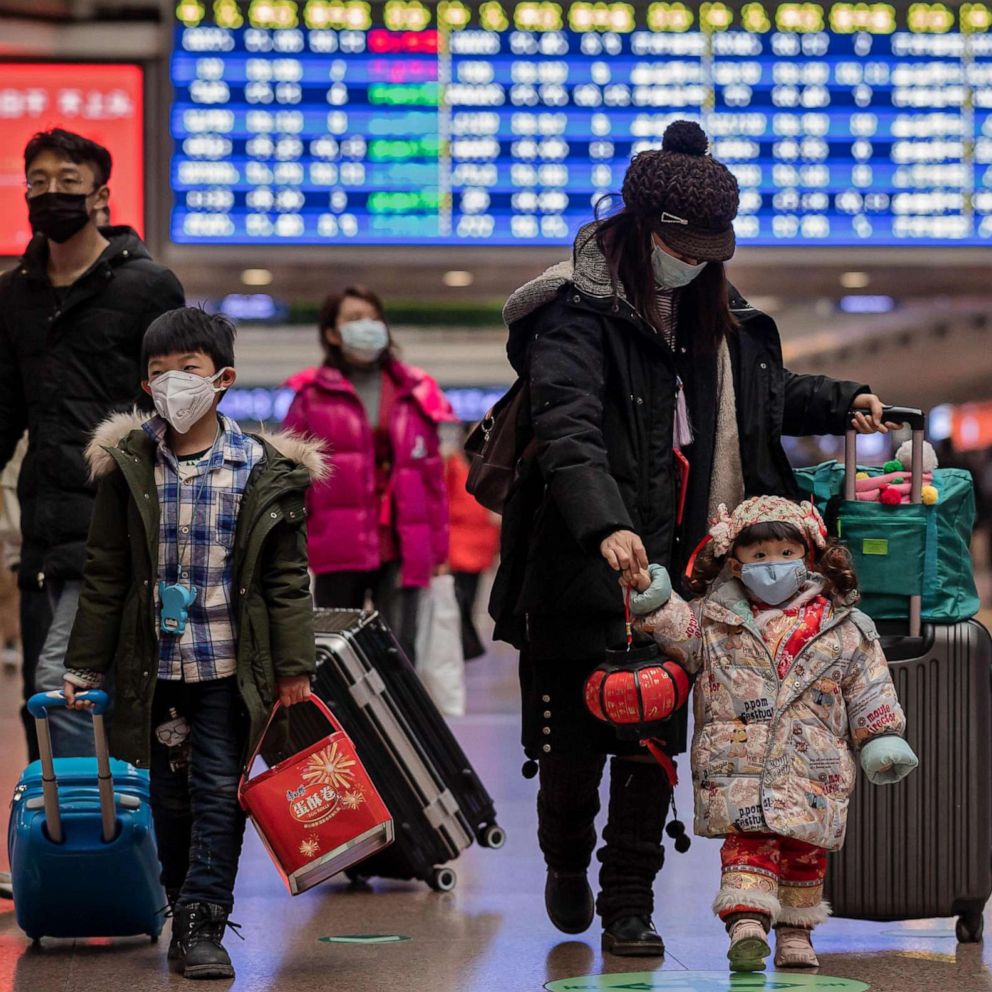How Trump has contradicted himself, in his own words, on the coronavirus crisis
It appeared to be an attempt to rewrite history -- his own.
President Donald Trump took a newly dire tone at the latest White House briefing and contradicted many of his previous assessments on how he's talked about and handled the novel coronavirus.
It came as his White House medical experts unveiled their own death projections for the first time, revealing that they estimate the virus will kill 100,000 to 240,000 Americans at a minimum -- and only if the nation practices strict social distancing.
And that's being called the "best-case scenario."
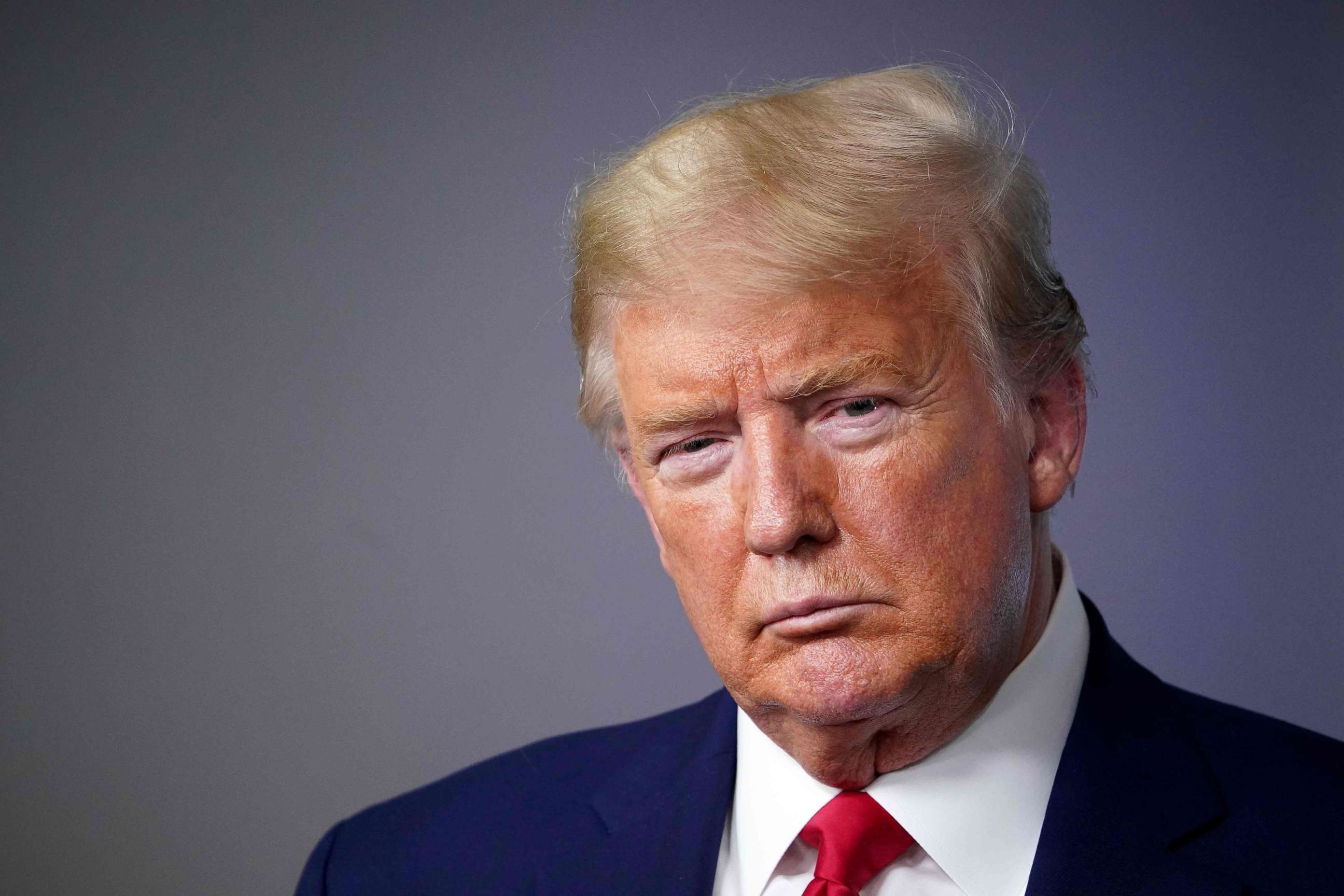
Trump said the prospect of 100,000 deaths was "sobering" but then went on to call it "a very low number," compared to the 2.2. million it could have been if the U.S. did "ride it out" without mitigation efforts -- as he said some of his "friends" suggested. He cast it as a success of sorts.
While the coronavirus may have silently spread across the country for the past ten weeks, President Trump has insisted that the virus is "under control," and later suggested the economic fallout will be worse than the death toll.
Trump on Tuesday defended any prior rosy assessments about the coronavirus, describing himself as a "cheerleader for the country" who wants to "give people hope."
But all the mixed messaging has created confusion over how serious the situation really is.
Here are a few examples -- side by side -- of how he has contradicted himself -- in his own words:
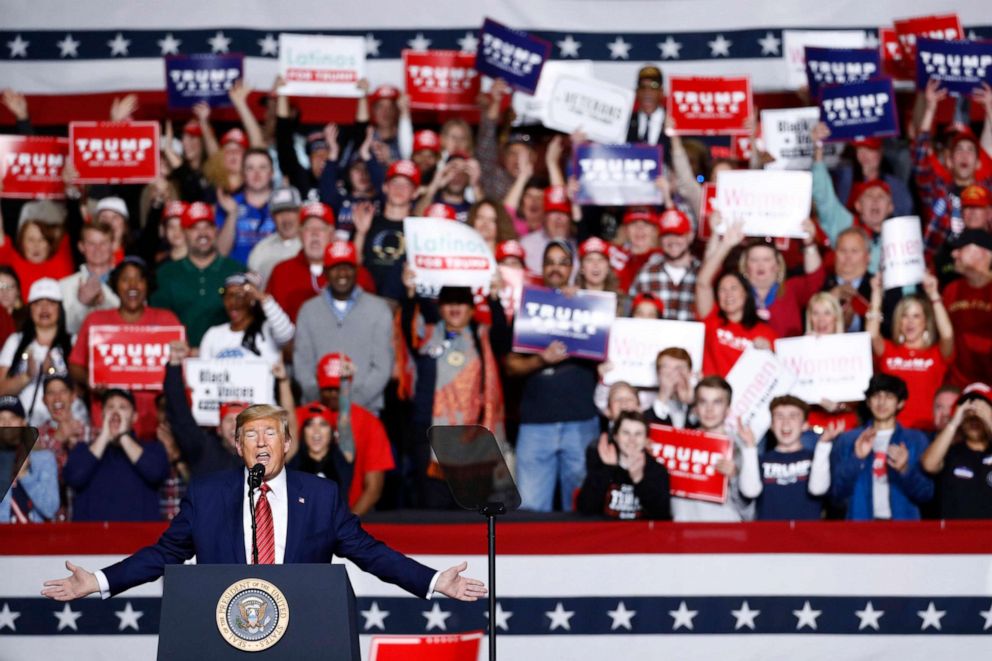
Tune into ABC at 1 p.m. ET and ABC News Live at 4 p.m. ET every weekday for special coverage of the novel coronavirus with the full ABC News team, including the latest news, context and analysis.
From signaling U.S. cases ‘close to zero’ to 100K being "a very low number"
The president initially downplayed the impact the virus would have on Americans, telling CNBC on Jan. 22, two days after the first reported cases on American soil, that "it’s one person coming in from China, and we have it under control. It’s going to be just fine."
- Feb. 26 -- Coronavirus task force briefing: "We're going very substantially down, not up." the president said, as the number of Americans infected with the virus grew to 60. "When you have 15 people and the 15 within a couple days is going to be down to close to zero, that's a pretty good job we've done."
- March 31 -- Coronavirus task force briefing: "A hundred thousand is, according to modeling, a very low number. I asked this a while ago, they said, ‘it's unlikely you will be able to attain that’ -- I think we are doing better than that," he said. "When you look at it could have been 2.2 million people died and more if we did nothing, if we just did nothing," adding the country has "done a great job."
From the virus will 'disappear' to the worst problem 'probably ever seen'
Trump previously suggested that coronavirus cases would drop as the weather warmed up. Now he’s signaling that 100,000 deaths would be considered a victory.
- Feb. 27 -- Cabinet Room meeting: "One day -- it’s like a miracle -- it will disappear. And from our shores, we -- you know, it could get worse before it gets better. It could maybe go away. We’ll see what happens. Nobody really knows," Trump said.
- March 31 -- Coronavirus task force briefing: "I want every American to be prepared for the hard days that lie ahead." Trump said he anticipates the pandemic will be "the worst thing the country has probably ever seen."
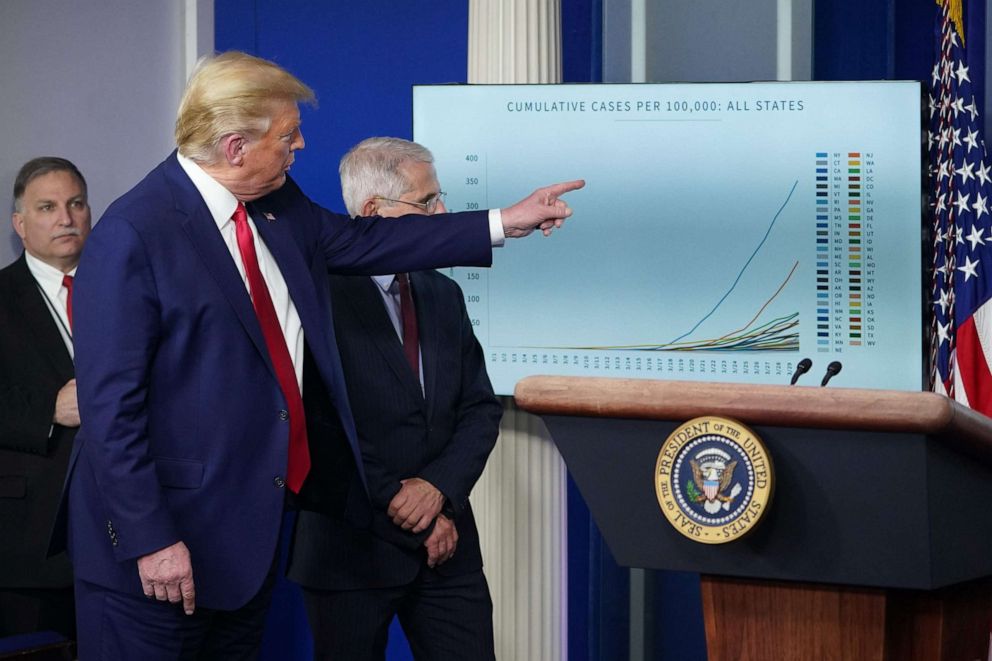
From several flu comparisons to ‘it’s not the flu’
While the number of infected Americans grew exponentially, President Trump repeatedly compared COVID-19 to the flu, even as health officials warned the novel virus appeared to be both more lethal and contagious. From his own packed rallies in February to just last Friday in the White House Briefing Room, the president said to "call it a flu."
- Feb 26 -- Coronavirus task force briefing: "This is a flu. This is like a flu," Trump repeated. "It's a little like the regular flu that we have flu shots for. And we'll essentially have a flu shot for this in a fairly quick manner."
- March 31 -- Coronavirus task force briefing: President Trump acknowledged for the first time, "it’s not the flu. It’s vicious."
From "packed churches" on Easter to "very painful" two weeks ahead
When stocks tumbled and jobless claims broke records last week, the president urged Americans to get back to work. Even after the White House initially proposed its social distancing guidelines on March 16, Trump grew more vocal that the country "wasn't built to be shut down" -- an argument he has appeared to have since dropped.
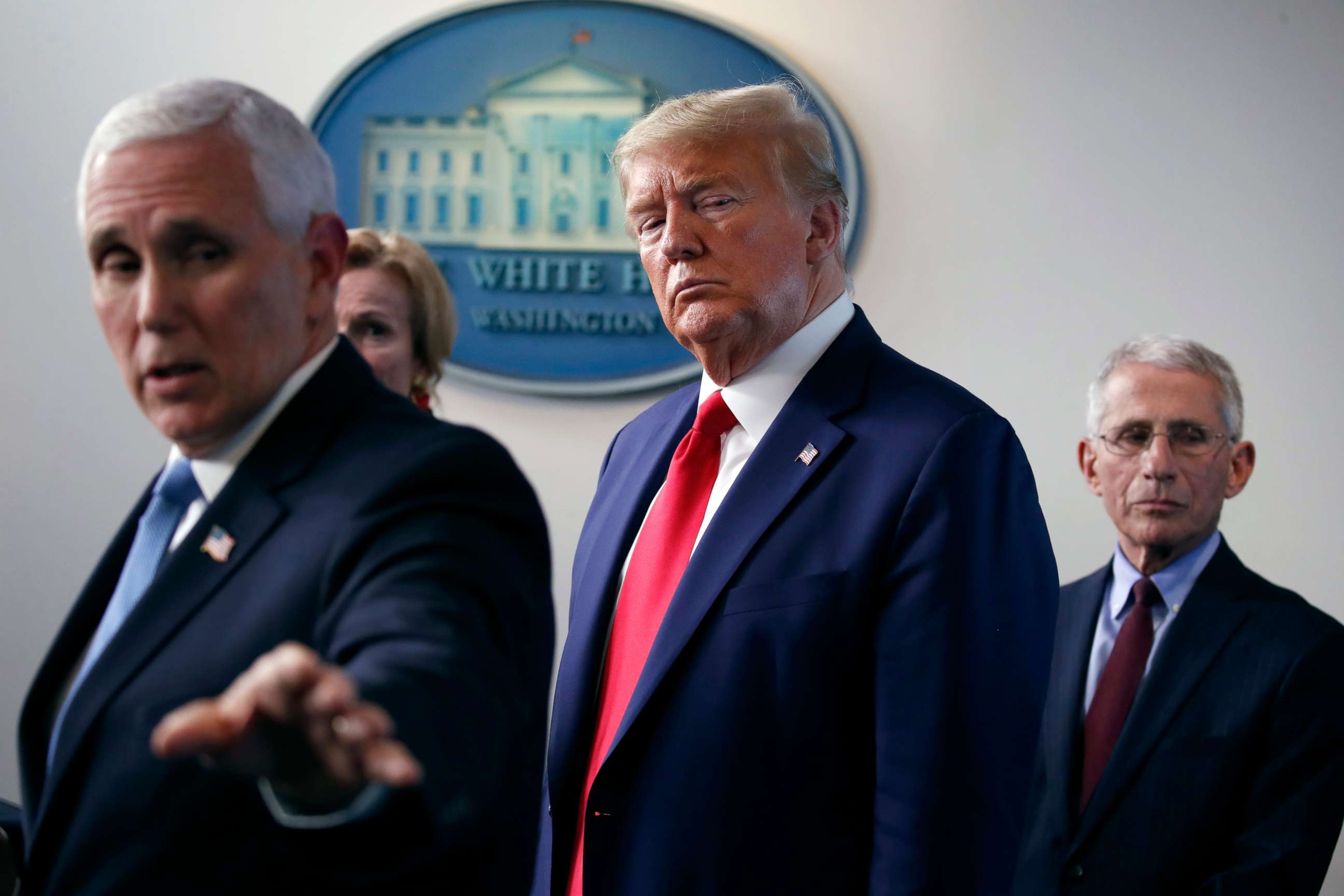
- March 24 -- Fox News Town Hall: Trump said he envisioned "packed churches" on Easter, April 12. "It’s such an important day for other reasons, but I’d love to make it an important day for this. I would love to have the country opened up, and raring to go by Easter."

